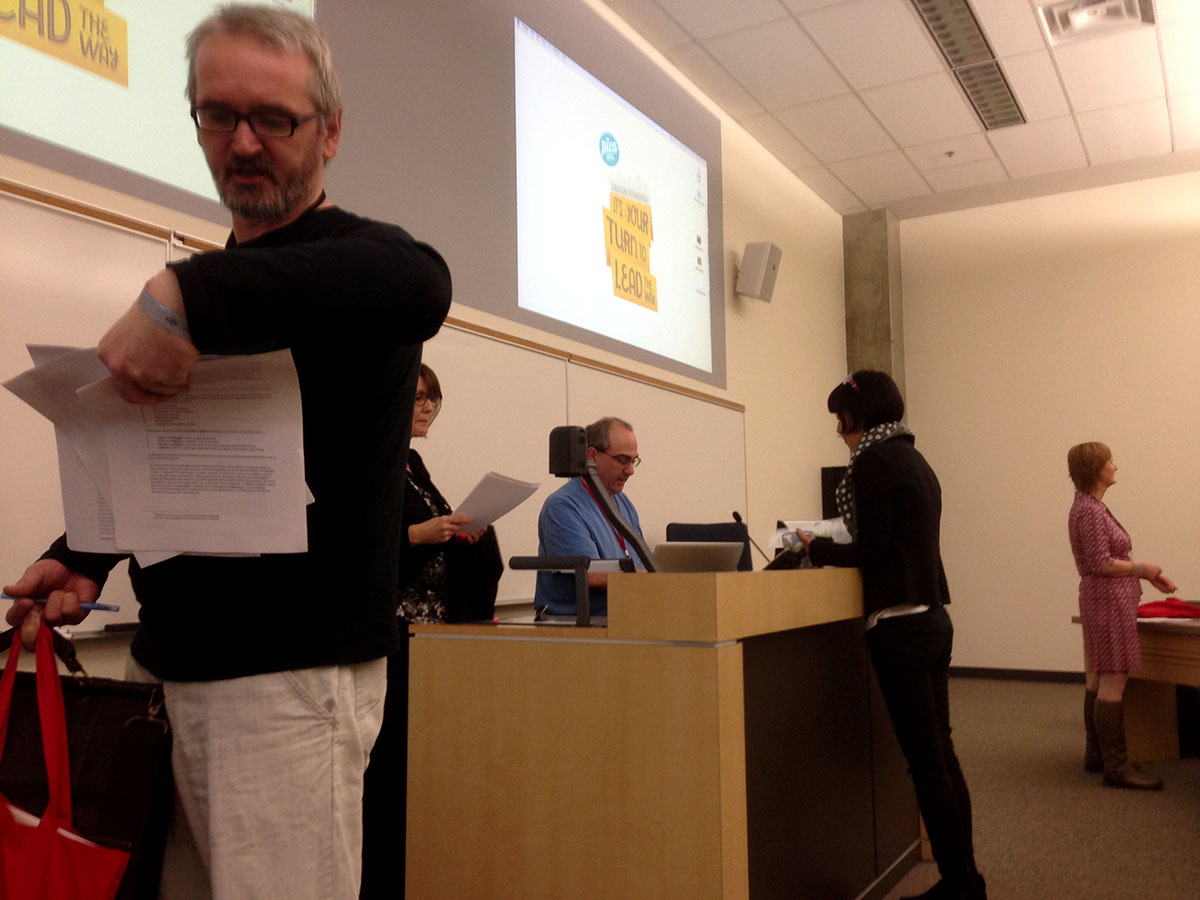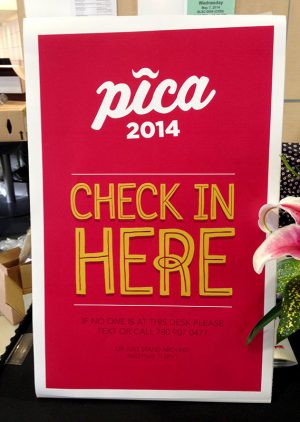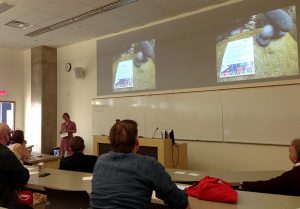PICA 2014: Presenting Design + Code in Edmonton


For two semesters I have been teaching Interaction Design as visual design + code at Miami University. This means that learners in my classes have been designing the look and feel of websites, but have also learned enough HTML, CSS, and JavaScript to make their sites real. In May 2014 I was invited to present my progress in the Educators Stream at the PICA Conference in Edmonton, Alberta, Canada. The conference theme was Design Pioneers, and the selection committee compiled a range of speakers and topics that explored the future of design education in some fascinating ways. It also led to some moving conversations that explored why we teach design the way we do and how it can adapt with learning, technological, and social change. Graphic Designers of Canada (GDC) Alberta North coordinated the conference and as someone who’s far more familiar with design in the United States, I looked forward to engaging with Canadian designers and design educators.

At the conference, I presented A Necessary Shift: Engaging Coding In Graphic Design Education where I shared why design educators should challenge learners to develop working prototypes in interaction design, which often involves some coding knowledge. Because interaction design outcomes are “used,” I stressed that outcomes must be used in order for their efficacy to be evaluated (during the process of designing and after the design is completed). As people see their worlds through screens and devices more and more, it is important for the design of these interfaces to empower users instead of impeding them. At the conclusion of my presentation, I shared how I had structured my courses in Graphic Design at Miami University and what I have learned so far by teaching interaction design with an emphasis on creating outcomes that function as close to the final product as possible.

Before this trip, I had never been to Edmonton before and found the people to be warm and welcoming. A range of topics was presented by educators from mostly Canadian universities and colleges, and I enjoyed a chance to learn about the work they are doing in their classrooms. Several presenters spoke about community partnerships and I was excited to hear how design students were applying their skills to address issues in their communities. Several educators were exploring how design decisions have affected First Nations people and how design may heal past infractions. Keynote Speaker Bernard Canniffe challenged educators to challenge established norms with his presentation We Are All Standing in Front of the Abyss Looking Backwards-A Paradoxical Journey, sparking lots of discussions and personally, serving as a charge to make changes in my teaching.
While I was only in Edmonton for about three days, the connections made left me excited to return.
Be the First to Comment